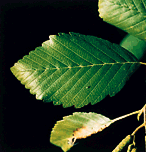Plant Data Sheet
|
Red alder, Alnus rubra |
 |
Range
Climate, Elevation
Low winter temperatures and lack of precipitation limit red
alder. Locally, elevations below 450 m (Silvics of N.A. 1990)
Local occurrence (where, how
common)
Habitat preferences
Moist soils, sunny sites, disturbances (Silvics of N.A. 1990)
Plant strategy type/successional stage (stress-tolerator,
competitor, weedy/colonizer, seral, late successional)
Weedy, colonizer and seral. Nitrogen-fixer
Associated species
Big-leaf maple, Douglas fir, willow, western red cedar, western hemlock, grand fir, black cottonwood (Silvics of N.A. 1990)
May be
collected as: (seed, layered, divisions, etc.)
Seed, stump-sprouts, greenwood cuttings, mound layering (Silvics of N.A. 1990)
Collection restrictions or
guidelines
Seeds shed in September (
Seed germination (needs
dormancy breaking?)
Will germinate in fall or spring on moist mineral soil in full sunlight. No or little dormancy. (Silvics of N.A. 1990)
Seed life (can be stored,
short shelf-life, long shelf-life)
Short; very small seeds. Store no more than two seasons.
Recommended seed storage
conditions
Store in paper sacks in cool, dry environment
Propagation recommendations
(plant seeds, vegetative parts, cuttings, etc.)
Collect cones, separate seeds, plant seeds. Pull-ups also convenient
and plentiful. (Rose et al. 1996)
Soil or
medium requirements (inoculum necessary?)
Will grow in non-soil medium, but requires inoculum for nitrogen-fixing actinobacteria
Frankia in
nodules.
Installation form (form, potential
for successful outcomes, cost)
Seeds, container-plants grown from seeds, green cuttings,
bare root (Silvics of
N.A. 1990)
Recommended planting density
6’ centers (Stevens and Vanbianchi 1994)
Care requirements after
installed (water weekly, water once, never water, etc.)
Requires moist soil (Stevens
and Vanbianchi 1994)
Normal rate of growth or
spread; lifespan
Fast growth: 30’ at 5 yrs., 50’ at 10 yrs. 80 ft. at 20 yrs. Mature at 60-70 yrs. Maximum age 100 yrs. (Silvics of N.A. 1990)
Sources cited
Burns, R. and B. Honkala
1990. Silvics of
Rose, R., C. Chachulski
and D. Haase.
1996. Propagation of
Stevens, M. and R. Vanbianchi.
1993. Restoring Wetlands in
Data compiled by: Kern Ewing, 14 Mar 2003